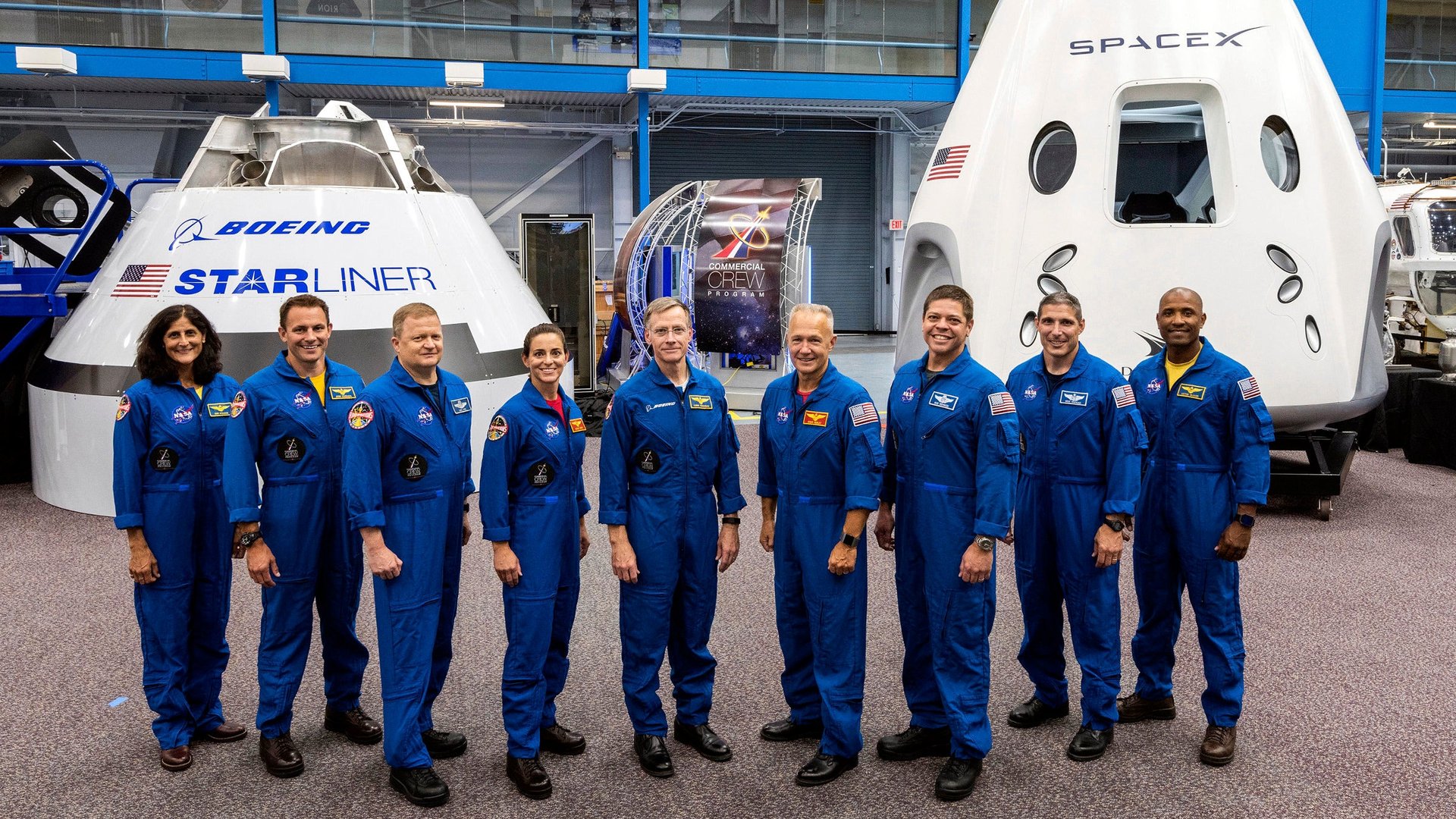NASA tapped the first astronauts to fly on private spacecraft—so where are the rides?
The US space agency divvied up nine of its astronauts to ride on spacecraft being developed by SpaceX and Boeing. The only problem? Those spacecraft are late and getting later.


The US space agency divvied up nine of its astronauts to ride on spacecraft being developed by SpaceX and Boeing. The only problem? Those spacecraft are late and getting later.
“We are on the brink of launching American astronauts on American rockets from American soil,” NASA administrator James Bridenstine said at an Aug. 3 ceremony at Johnson Space Center in Houston, Texas. “Brink,” in this case, actually means in eight months, if not more.
The ceremony assigning astronauts to their vehicles was overshadowed by new launch dates announced in the days leading up to the event, which suggest these “space taxis” won’t be ready to fly by the time the last US astronaut comes back from the International Space Station on a Russian Soyuz spacecraft in November 2019.
Vice President Pence, the White House’s point man on space, was expected to attend the event before skipping it.
Boeing hurriedly announced new delays in a phone call with select reporters on Aug. 1, a day before NASA posted the new dates for both companies’ long-awaited test flights, which seasoned rocket observers say could still slip. Both companies are eager to be the first to reach ISS and win a game of orbital capture-the-flag by claiming an American flag left behind by the final shuttle mission.
Boeing shifted the flight test dates for its CST-100 Starliner by six months. A June test identified four sticky engine valves that failed to close and leaked toxic fuel on the spacecraft, forcing the company to re-jigger its test schedule. Now, it plans to fly an uncrewed test flight sometime around the end of the year, with its first crewed flight expected for “mid-2019.”
SpaceX, in turn, pushed the flight of its crewed Dragon capsule back just a few months: It anticipates an uncrewed test launch in November 2018, and a flight with crew in April 2019. Among other technical challenges, hitting that goal depends on successfully flying a re-designed engine pressurization system SpaceX has yet to debut in an operational rocket.
Following each test flight, NASA engineers will need to process the data garnered from the missions to certify the spacecraft are safe enough to return regular human spaceflight to US soil for the first time since the space shuttle last flew in 2011.
The expanded cadre of commercial-crew astronauts represent the cream of technical and physical training: All are former military pilots or flight engineers, and many are experienced space travelers (two will be flying to space for the first time). One of the new crew members, Chris Ferguson, is actually a former astronaut: Now he is a Boeing employee charged with designing the company’s spacecraft, and will fly as a private test pilot.
Williams, Hurley, Behnken, and Boe have been working with closely with both companies since 2015 to develop their spacecraft. Now, they and their new comrades will begin training exclusively with their assigned spacecraft to ensure they can confidently operate them in the extreme conditions of space.
How much actual flying is necessary in the largely automated capsules remains to be seen; Bridenstine and Behnken joked that flying the futuristic Dragon spacecraft with its touch-screen interfaces “is absolutely like flying the iPhone.” Both vehicles are designed to fly autonomously, but astronauts traditionally like to get their hands dirty—and they are training to pilot them to Earth in event of computer malfunctions.
The decision to hire private companies to build new spacecraft to replace the space shuttle, rather taking on the entire task in-house, was driven by NASA’s success hiring SpaceX and OrbitalATK to fly cargo to the space station.
NASA expects partnering with SpaceX and Boeing to fly humans will be cheaper and more efficient, allowing the space agency to focus on more ambitious plans to return to the moon. But human spaceflight is no easy challenge, and the success or failure of the program will figure significantly in efforts to drive private investment in aerospace.
While Boeing has been putting people in space for decades, this will be SpaceX’s first attempt. Given founder Elon Musk’s goal of carrying people to Mars (and tourists around the moon) the milestone will be especially important for SpaceX. The company’s indefatigable president, Gwynne Shotwell, was on hand to congratulate the astronauts, alongside Boeing’s top space and defense executive Leanne Caret, lawmakers including senator Ted Cruz, and NASA VIPs.
“Elon founded this company 16 years ago with a laser focus on building the safest, most reliable ships to take us off this precious planet,” she said. “The 7,000 women and men of SpaceX understand what a sacred honor this is…we won’t let you down.”